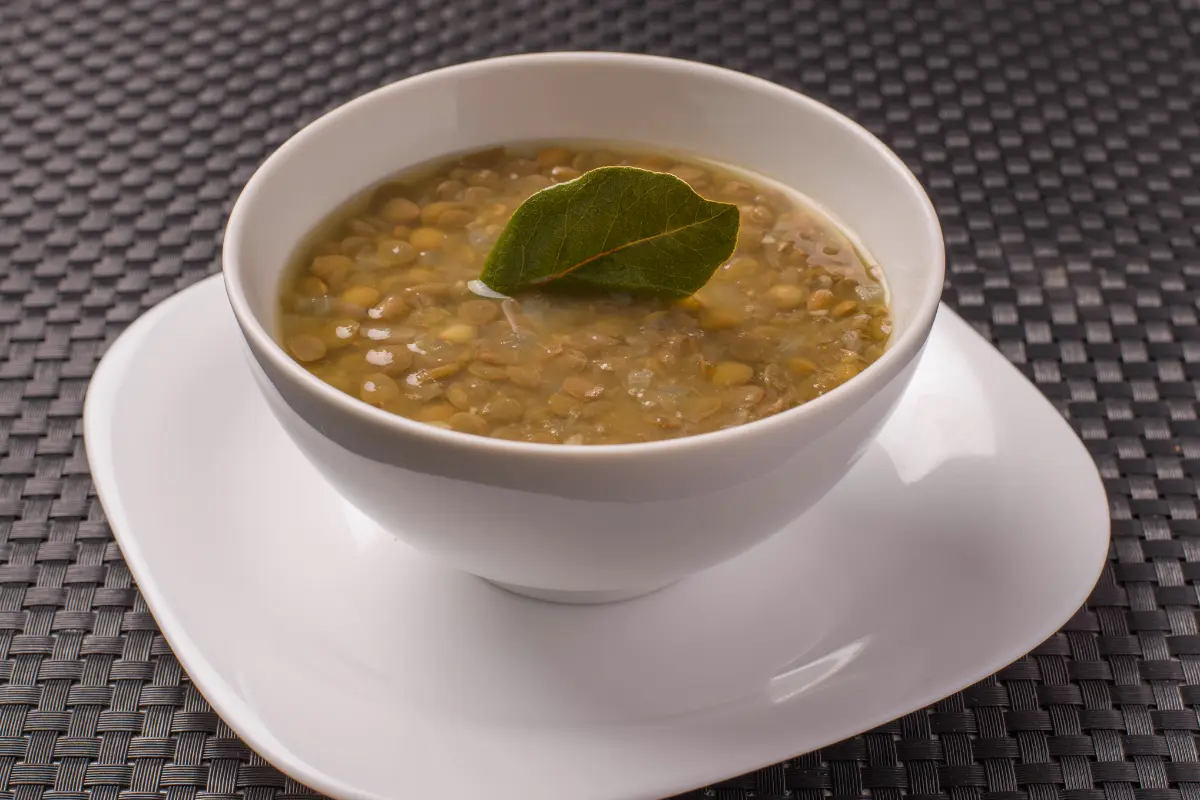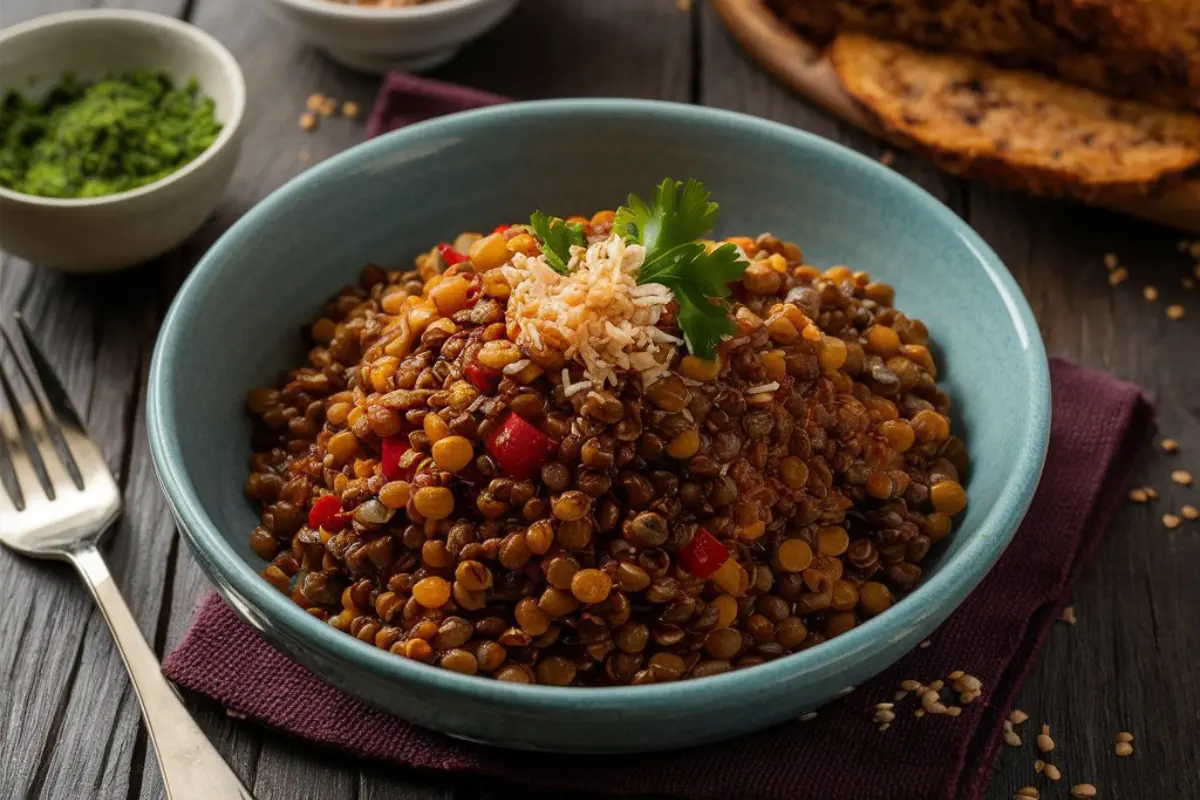Lentejas, also known widely as lentils, are not just any staple food. They have carved a niche in both culinary and nutritional spheres across the globe. Packed with proteins and rich in dietary fiber, lentejas play a crucial role in various diets, especially for those seeking plant-based protein sources. This article dives deep into the essence of lentejas, exploring their health benefits, culinary versatility, and their pivotal role in agriculture and economics. So, let’s embark on this flavorful journey that not only satiates your palate but also enriches your health!
Introduction to Lentejas
Introduction to the Topic
Lentejas have been nourishing humanity for millennia. Originating from the Near East, these small but mighty legumes have become integral to cuisines around the world. Why? Well, they’re not only versatile and easy to cook but also offer a plethora of health benefits that are hard to overlook.
Brief History of Lentils
Historically, lentejas were among the first crops domesticated in the Old World. Growing primarily in temperate climates, their cultivation spread throughout Europe and Asia, thanks to their adaptability and ease of growth. Today, they are celebrated in numerous dishes across cultures, showcasing their universal appeal.
Importance in Global Cuisine
From the hearty stews of Spain to the rich dals of India, lentejas form the backbone of numerous traditional dishes. Each recipe offers a glimpse into the cultural significance of these pulses. Moreover, their ability to blend into various meals makes them an invaluable ingredient in the global culinary scene.
As we delve deeper into the nutritional profile and culinary uses of lentejas in the upcoming sections, you’ll discover just how indispensable these legumes are. Not only for their health benefits but also for their economic impact and agricultural importance. So, stay tuned as we uncover the layers of this humble yet powerful food.
Nutritional Profile
Health Benefits of Lentejas
Lentejas are a powerhouse of nutrition. Each serving is packed with essential nutrients that can bolster your health in numerous ways. First off, they’re an excellent source of protein, making them an ideal choice for vegetarians and vegans looking for non-meat protein options. Additionally, lentejas are rich in dietary fiber, which supports digestive health and helps maintain blood sugar levels. They are also noted for their high polyphenol content, which contributes to their health-promoting effects. To understand more about the nutritional impact of polyphenols in lentejas, see this detailed study on their health benefits.
Nutritional Content Breakdown
A closer look at the nutritional makeup of lentejas reveals that they are not only high in protein and fiber but also rich in vital minerals such as iron, folate, and manganese. These nutrients play crucial roles in bodily functions, from oxygen transport to DNA synthesis and energy production. Also, lentejas are low in calories and virtually fat-free, making them a fantastic food choice for anyone monitoring their calorie intake.
Discussion on Dietary Benefits Such as Protein and Fiber Content
Incorporating lentejas into your diet can have significant health benefits. For instance, the high fiber content helps in lowering cholesterol levels and promotes a feeling of fullness, aiding in weight management. The protein in lentejas is of high quality and you can easily integrate it into various dishes, making it a versatile ingredient in your kitchen. Furthermore, the iron content in lentejas can combat fatigue and boost energy levels, which is especially beneficial for those with iron-deficiency anemia. Below is a table summarizing the primary aspects of lentejas that contribute to their reputation as a superfood. This overview serves as a prelude to a more detailed discussion on the nutritional content and dietary benefits of lentejas.
| Aspect | Description | Nutritional Highlight | Cultural Significance |
|---|---|---|---|
| Nutritional Benefits | Lentejas are an excellent source of protein and fiber, vital for maintaining good health and digestion. | High in protein, fiber, iron, and folate. | — |
| Culinary Uses | Lentejas are versatile in cooking, used in soups, stews, salads, and as meat substitutes in various dishes. | Used globally in diverse dishes. | — |
| Cultural Significance | In many cultures, lentejas are associated with prosperity and are traditional in celebratory meals. | — | Symbol of prosperity in New Year’s celebrations in Mexico. |
Lentejas aren’t just food; they’re a nutritional staple that supports a healthy lifestyle. As we move forward, we’ll explore how these nutritious legumes are used across different cuisines and some tips on cooking them to perfection. So, let’s keep the ball rolling and dive into the culinary uses of lentejas.
Culinary Uses
How to Cook Lentejas
Cooking lentejas is straightforward and rewarding. To start, it’s essential to rinse them thoroughly to remove any dirt or debris. There’s no need to soak them like other legumes, which cuts down on prep time significantly. You can cook them in a pot of boiling water or broth until they’re tender, which typically takes about 20 to 30 minutes. A pinch of salt can be added towards the end of cooking to enhance their flavor without making them tough.
Tips for Preparation
To elevate the taste of your lentejas, consider sautéing onions, garlic, and spices in a bit of oil before adding the lentejas and liquid for cooking. This method, known as tempering, releases the flavors of the spices and infuses the lentejas with these aromatic notes. Moreover, for those who enjoy a bit of tang, adding a splash of vinegar or a squeeze of lemon juice after cooking can brighten the flavors wonderfully. If you’re looking to pair your lentejas with a grain, check out this ultimate guide on preparing Near East Rice Pilaf, which offers a variety of recipes that complement legume-based dishes perfectly
Popular Lentejas Recipes
Lentejas are incredibly versatile in the kitchen. In Spain, ‘Lentejas con Chorizo’ is a beloved dish where these pulses are cooked slowly with chorizo, potatoes, and paprika, offering a comforting and hearty meal. Over in India, lentejas transform into ‘Dal’, a staple dish where they are cooked into a thick stew with spices and herbs, served with rice or bread.
Another fantastic way to enjoy lentejas is in salads. Cooked lentejas can be tossed with a mix of fresh vegetables, herbs, and a vinaigrette dressing for a nutritious and satisfying meal. They also make excellent veggie burger patties when mixed with breadcrumbs, spices, and bound together with an egg.
Modern Twists on Classic Dishes
Chefs and home cooks alike are getting creative with lentejas by incorporating them into modern dishes. Imagine a smooth, creamy lentejas soup topped with crispy bacon or a vegan version with coconut milk and curry spices for an exotic touch. There’s also a growing trend of using lentejas in baked goods, like in breads and muffins, where they add a nutritious boost of protein and fiber.
As we’ve seen, lentejas can adapt to any meal, providing both nutritional benefits and a canvas for culinary creativity. Next, we’ll delve into how lentejas fit into various diet plans, particularly in vegetarian and vegan lifestyles, where they hold significant importance.

Lentejas in Diet
Vegetarian and Vegan Diets
Lentejas are a cornerstone in vegetarian and vegan diets, celebrated for their high protein content which is crucial for those who abstain from animal products. Not only do they provide a substantial protein boost, but they are also a flexible base for a myriad of dishes that require bulk and texture. Additionally, lentejas are a great source of iron and B-vitamins, which are often points of concern in plant-based diets.
How Lentejas Serve as a Meat Substitute
Due to their meaty texture when cooked, lentejas make an excellent substitute for ground meat in recipes like tacos, bolognese sauce, or burgers. They absorb flavors wonderfully, making them ideal for heavily spiced dishes that are customary in vegetarian cuisine. Moreover, their versatility allows them to be incorporated into loaves, meatballs, and even as a filler in stuffed vegetables, providing a satisfying heartiness to every meal.
Incorporating Lentejas in Daily Diet Plans
Incorporating lentejas into daily meals is a breeze. You can prepare them in bulk at the beginning of the week and add them to different dishes throughout. For breakfast, you can mix lentejas into a vegetable hash or use them as a base for savory porridge. For lunch, they are perfect in cold salads or warm soups, providing a protein-packed midday meal. At dinner, they can star in stews, stir-fries, or as a simple side dressed with herbs and spices.
The fiber in lentejas also plays a crucial role in maintaining digestive health, which is vital for overall wellness. Their low glycemic index makes them suitable for those managing blood sugar levels, and their nutrient density supports sustained energy throughout the day.
s we explore further, we’ll delve into the agricultural side of lentejas, understanding how farmers grow them and their impact on the economy. This will give us a full circle view of how these humble legumes are not just good for our health but also for our planet.
Agricultural and Economic Aspects
Growing Lentejas
Lentejas thrive in a variety of climates but are particularly suited to temperate regions. They are generally sown during the spring and harvested in the late summer. Because they have a relatively short growing season and require little water, lentejas are an excellent crop for areas prone to drought. Lentejas stand out for their natural ability to enrich the soil by fixing nitrogen, which boosts soil fertility and eliminates the need for chemical fertilizers. This eco-friendly trait makes them an excellent choice for sustainable farming practices.
Lentejas thrive in a variety of climates but suit temperate regions particularly well. Farmers generally sow them during the spring and harvest them in the late summer. Because they have a relatively short growing season and require little water, lentejas are an excellent crop for areas prone to drought. Additionally, lentejas are known for their ability to fix nitrogen in the soil, improving soil fertility without the need for chemical fertilizers. For more detailed information on the cultivation and benefits of lentils, refer to the USAID’s Lentils Commodity Fact Sheet.
Regional Significance in Agriculture
Different regions around the world have adapted the cultivation of lentejas to suit local environmental conditions and dietary preferences. In countries like Canada and India, farmers grow lentejas on a large scale to meet the high demands of both domestic consumption and exports. These legumes form an essential part of the agricultural economy in these areas, supporting local farmers and contributing to food security.
Economic Impact of Lentejas
The economic impact of lentejas is profound. They are not only a cost-effective source of high-quality protein and nutrients but also play a significant role in international trade. As a crop that requires minimal inputs in terms of cost and labor, lentejas offer an attractive return on investment for farmers. Moreover, the global demand for plant-based proteins has seen a steady increase, making lentejas a valuable commodity in the agricultural export markets.
Lentejas also support sustainable agricultural practices. Their ability to enrich the soil reduces the need for synthetic fertilizers, promoting a healthier farming ecosystem and reducing costs for farmers. This aspect of lentejas cultivation can be a model for sustainable agriculture practices worldwide.
In the next section, we will answer some frequently asked questions about lentejas, shedding light on common queries and misconceptions to enhance our understanding and appreciation of this versatile legume. Stay tuned as we delve into these insightful FAQs.

